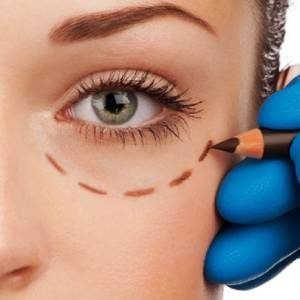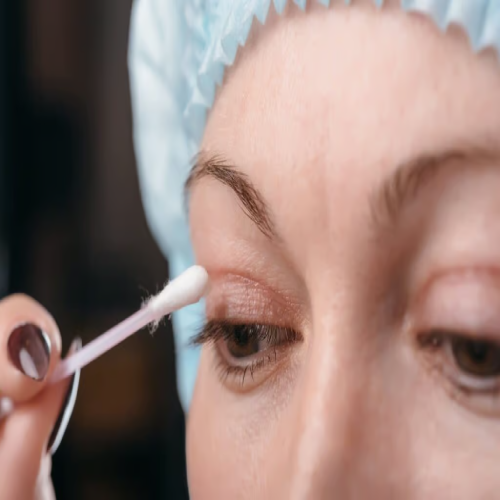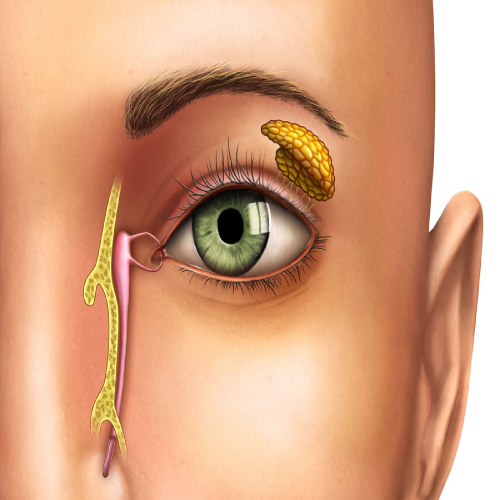About Orbit & Oculoplasty
Orbit and oculoplasty are specialized areas of ophthalmology focused on the treatment of conditions affecting the eye socket (orbit) and the surrounding structures. Orbital surgery addresses issues such as tumors, fractures, and infections of the orbit, aiming to restore normal function and appearance.
Symptoms of Orbit & Oculoplasty
- Proptosis
- Double vision
- Eyelid swelling
- Excessive tearing
- Drooping eyelids
- Pain around the eye
- Decreased vision
- Eyelid retraction
- Visible mass or lump around the eye
- Eyelid twitching

Causes of Orbit & Oculoplasty
- Thyroid Eye Disease (Graves’ Disease): Autoimmune disorder leading to inflammation and swelling in the muscles around the eyes, causing proptosis and double vision.
- Orbital Tumors: Abnormal growths in the orbit that can lead to proptosis, pain, vision loss, and a visible mass.
- Trauma: Injury to the orbit or surrounding tissues from accidents or blunt force can cause swelling, fractures, and vision impairment.
- Infections (Orbital Cellulitis): Bacterial or viral infections around the eye can cause pain, swelling, and proptosis, often requiring urgent medical care.
- Congenital Disorders: Conditions present at birth, such as ptosis or malformations of the eyelids, can affect eye function and appearance.
- Lacrimal Gland Obstruction: Blockage of the tear ducts leading to excessive tearing (epiphora) and potential infection of the lacrimal system.
- Age-Related Changes: Sagging of the eyelids (ptosis), excess skin, and fat deposits around the eyes, often requiring corrective surgery.
- Inflammatory Disorders: Conditions like sarcoidosis or Wegener’s granulomatosis that cause inflammation in the orbit and surrounding tissues, leading to pain, swelling, and vision problems.

Orbit & Oculoplasty
Thyroid Eye Disease (Graves’ Orbitopathy):
- Medications: Steroids or other immunosuppressive drugs to reduce inflammation.
- Radiation Therapy: To decrease inflammation and swelling in severe cases.
- Surgical Decompression: To relieve pressure on the optic nerve and improve eye positioning.
Orbital Tumors:
- Surgery: To remove the tumor and assess whether it is benign or malignant.
- Radiation Therapy: To target and destroy tumor cells if surgery is not possible or in conjunction with surgery.
- Chemotherapy: For malignant tumors that require systemic treatment.
When You Need
Treatment Orbit & Oculoplasty



Protrusion of the Eye (Exophthalmos): If one or both eyes appear to be bulging, possibly due to conditions like thyroid eye disease, tumors, or inflammation.
Persistent Eye Pain: If you experience ongoing pain or discomfort in the eye socket that doesn’t resolve with standard treatments.
Sudden Vision Changes: If you notice sudden or severe changes in vision, such as double vision or vision loss, which could indicate orbital issues.
Swelling or Redness: Unexplained swelling, redness, or tenderness around the eyes that might be due to infection, trauma, or other conditions.
Frequently Asked Questions
Oculoplasty treats a variety of conditions including drooping eyelids (ptosis), eyelid malpositions (entropion or ectropion), tear duct obstructions, orbital tumors, thyroid eye disease, trauma to the eye area, and cosmetic concerns such as wrinkles or sagging skin around the eyes.
Ptosis is a condition where the upper eyelid droops over the eye, sometimes obstructing vision. It can be caused by aging, muscle weakness, or nerve problems. Treatment typically involves surgery to tighten or reattach the muscles that lift the eyelid.
- Entropion is a condition where the eyelid turns inward, causing the eyelashes to rub against the eye, leading to irritation and discomfort.
- Ectropion is when the eyelid turns outward, exposing the inner eyelid surface and causing dryness or tearing. Both conditions are treated with surgery to reposition the eyelid and restore proper function.
Thyroid eye disease, also known as Graves’ orbitopathy, is an autoimmune condition that affects the muscles and tissues around the eyes, causing bulging eyes, eyelid retraction, and double vision. Treatment includes medications, steroid injections, or orbital decompression surgery, depending on severity.
24 / 7 HOURS SERVICE
